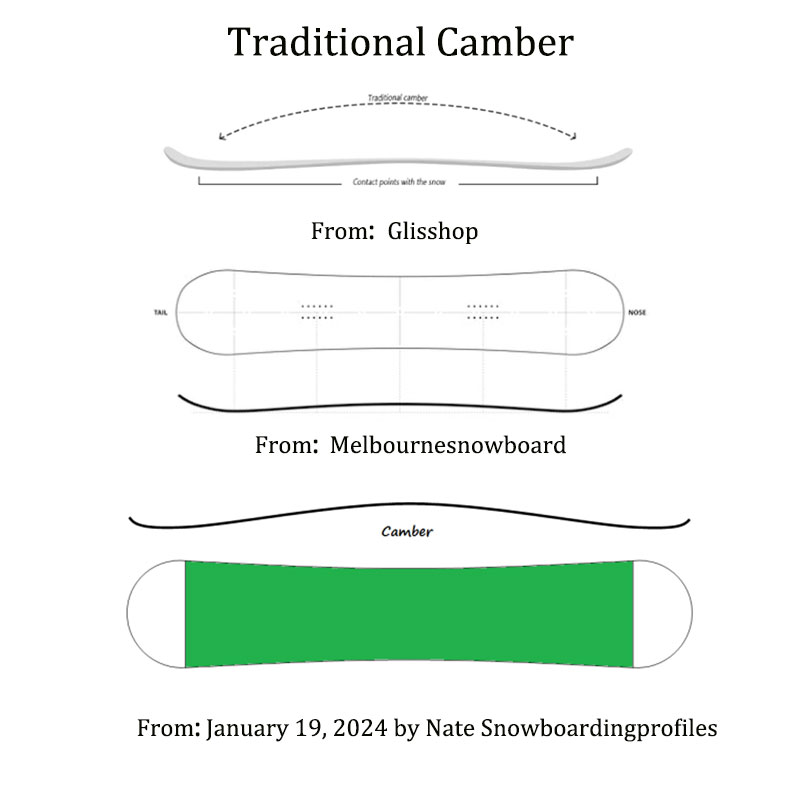
Here are three perspectives on traditional camber:
1.Traditional Camber:
This is known as traditional camber because once upon a time pretty much all snowboards were made with this profile.
Basically there is camber under the board which runs from the contact point near the tail (where the board makes contact with the snow) to the contact point near the nose (where the board makes contact with the snow) – or said an easier way, camber from tip to tail!
This type of camber profile typically provides good for pop for ollies and jumps, improves edge-hold, adds to spring out of a turn and helps with stability at speed.
It can be easier for beginners to catch an edge with this style of camber. It is also more difficult in deep powder where you want more float.
-FROM: January 19, 2024 by Nate Snowboardingprofiles
2.Traditional Camber:
What is a camber? The camber, or profile, is the bend of the snowboard when it sits flat on the ground and you look at it from the side.
This bend will give a personality to the board. It can improve its playfulness, it can make it more or less forgiving, catchy or catch-free, more stable or more floaty.
The traditional camber, also called classic camber was born with snowboarding. Long before reverse, banana or W cambers joined the game, the traditional camber was ruling the snowboard industry. It is not the easiest profile to manage but it is the one that delivers the highest performance. If you let your board sit flat on the ground, unweighted, it looks like a long upward arc, running from one contact point to the other, each of these being close to the tips. Cambers are known to offer stability, precision, pop and powerful energy transmissions. They are best suited for carving or riding hard and fast, they handle speed with ease. The downside is, a traditional camber is not forgiving and makes edge-catch more frequent with beginners.
FORM: Glisshop
3.Traditional Camber:
This is the original snowboard shape ideal for aggressive riders who want bigger ollies.
It is stable at high speed especially when carving and has more control landing bigger jumps.
You have to use your own weight to push the board into the shape of a turn. The board then wants to return to its original position which creates the pop and snap that gives your board its energy and life.
Some people prefer riding this type of board in Powder because they feel that the pop and energy outweigh the fact that the nose constantly wants to dive down underneath the snow.
From Melbournesnowboard
What do you think of these explanations?

